Deciding between two luxury sedans, especially when they represent different paths in automotive evolution, can feel a bit overwhelming. You’re likely weighing incredible comfort, cutting-edge technology, and, of course, performance and efficiency. The Mercedes-Benz S-Class has long been the benchmark for automotive excellence, and two of its standout models, the S 500 Plug-In Hybrid and the S 350 Bluetec, offer distinct driving experiences. Which one is the right fit for you?
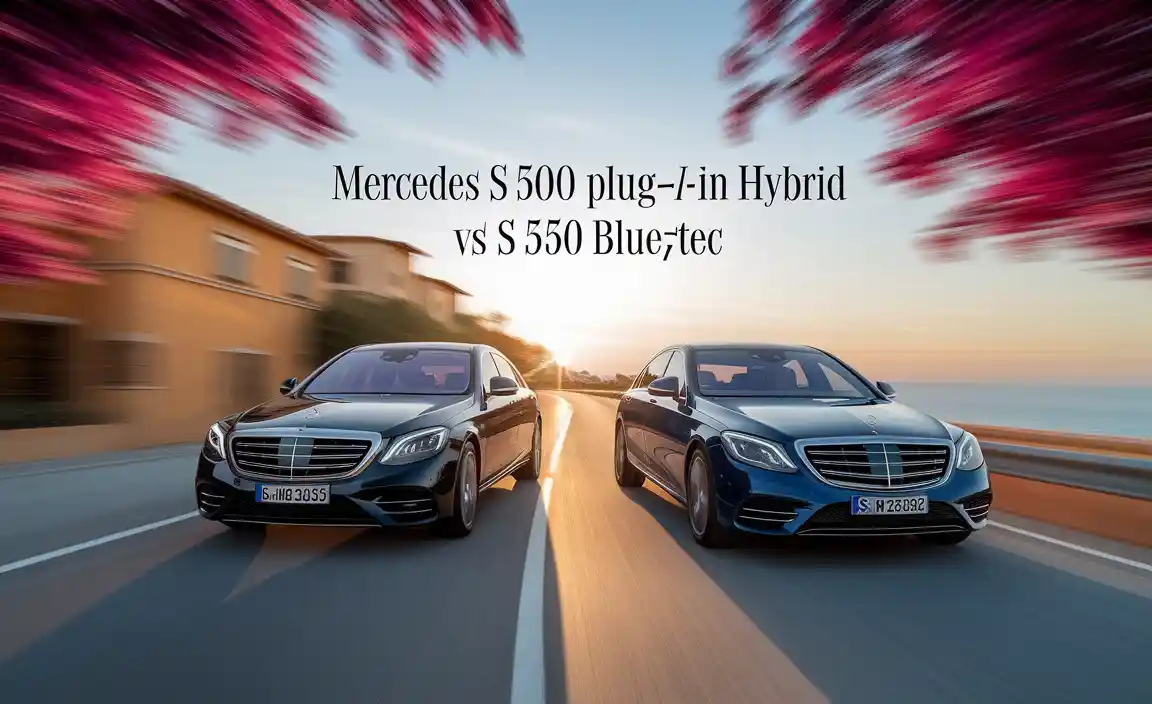
As Charlie Joyce, I understand that navigating these choices requires clarity, not confusion. You want to know what each car offers, how it fits your lifestyle, and which one represents the smarter, often “proven” path forward. This guide will break down the Mercedes S 500 Plug-In Hybrid versus the S 350 Bluetec, making the decision process simple and straightforward, so you can drive away with confidence. We’ll look at everything from fuel economy to driving dynamics, ensuring you get the insights needed to make the best choice for your garage.
Understanding Your Options: S 500 Plug-In Hybrid vs. S 350 Bluetec
Let’s dive into what makes these two S-Class variants so special and how they differ. It’s not just about a badge; it’s about fundamentally different approaches to luxury motoring.
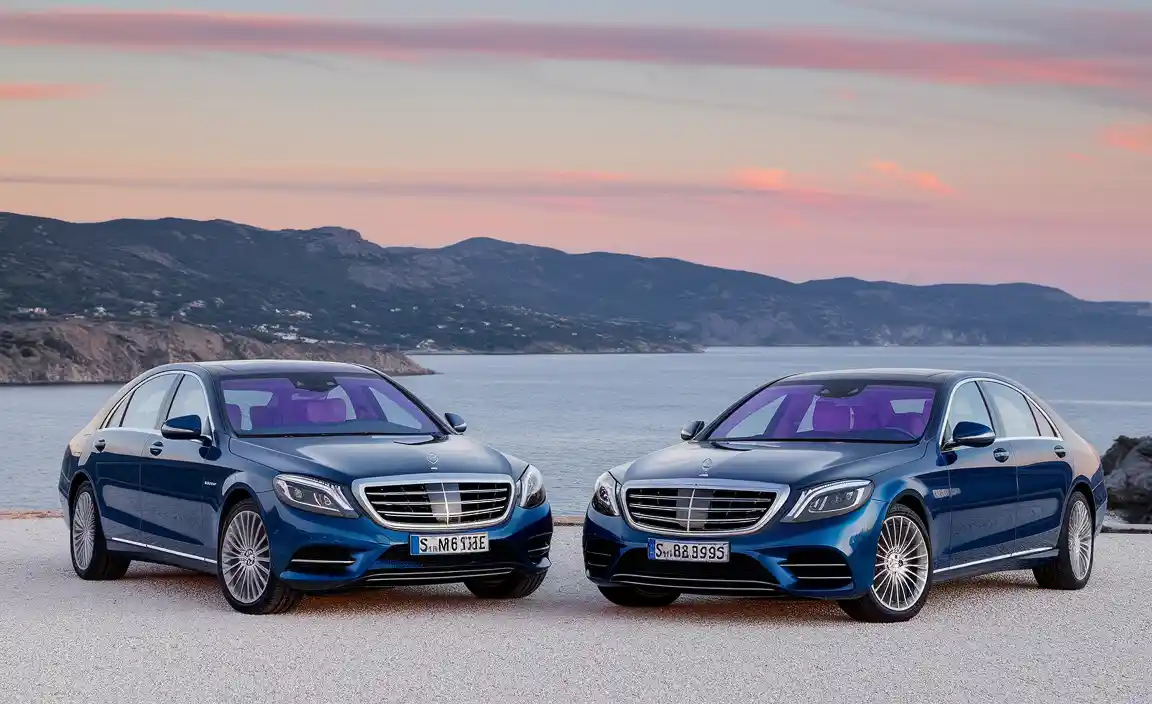
The Mercedes S 500 Plug-In Hybrid: Embracing the Future
The S 500 Plug-In Hybrid (often referred to by its generation-specific model numbers, like the W222’s 560 e) represents Mercedes-Benz’s commitment to electrification within its flagship sedan. It combines a powerful gasoline engine with an electric motor and a high-voltage battery, offering a unique blend of performance and eco-conscious driving.
This isn’t just a car that sips fuel; it’s a car that can run purely on electricity for significant distances. This capability is a game-changer for daily commutes, allowing you to glide through city streets silently and emission-free. When the battery is depleted or when you need maximum power, the sophisticated hybrid system seamlessly switches to the gasoline engine, ensuring you never compromise on performance or range. This duality is its core strength.
The Mercedes S 350 Bluetec: The Master of Efficiency
The S 350 Bluetec, a popular diesel variant in previous S-Class generations (like the W221), was celebrated for its remarkable fuel efficiency and long-distance cruising ability. It featured a potent yet economical diesel engine, enhanced with Mercedes-Benz’s Bluetec technology to minimize emissions.
Diesel engines are known for their torque, meaning they deliver a strong, immediate surge of power, which is perfect for effortless overtaking and relaxed highway driving. The S 350 Bluetec, in particular, was engineered to offer exceptional mileage per gallon, making it a favorite for those who frequently traveled long distances. It offered a more traditional, yet highly refined, approach to luxury motoring with an emphasis on sustained economy.
Key Differences at a Glance
To make the comparison clearer, let’s look at some of the most important aspects where these two models diverge.
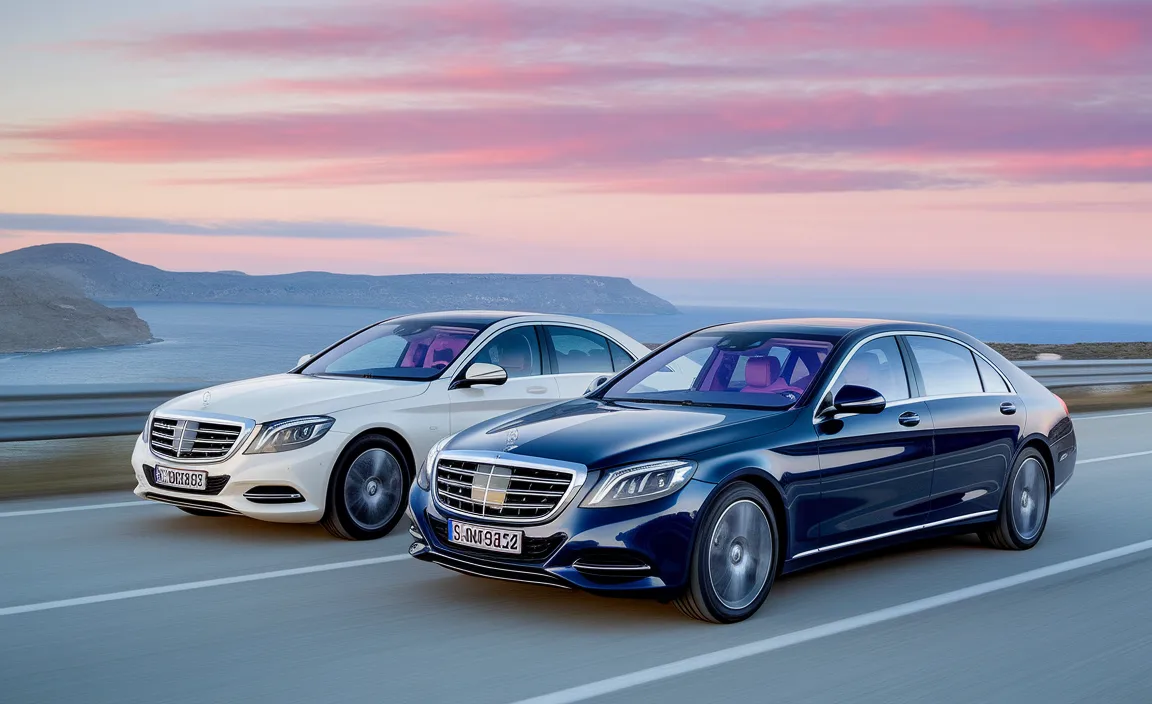
| Feature | Mercedes S 500 Plug-In Hybrid | Mercedes S 350 Bluetec |
|---|---|---|
| Powertrain | Gasoline engine + Electric motor + Battery | Diesel engine |
| Fuel Type | Unleaded gasoline & Electricity | Diesel fuel |
| Electric-Only Range | Significant (varies by generation, often 20-30+ miles) | None |
| Fuel Economy (Combined) | Very high, especially with regular charging | Excellent for its class, particularly on highways |
| Performance | Strong, immediate torque from electric motor, powerful combined output | Strong low-end torque, smooth and powerful |
| Emissions | Lower overall, zero tailpipe emissions in electric mode | Lower than comparable gasoline engines, but still tailpipe emissions |
| Driving Experience | Quiet and smooth in electric mode, powerful when combined | Refined diesel power, excellent for long journeys |
| Charging Requirement | Regular charging needed to maximize benefits | Standard refueling |
Performance & Driving Dynamics
Both cars offer the supreme comfort and refinement expected of an S-Class, but their performance characteristics are shaped by their powertrains.
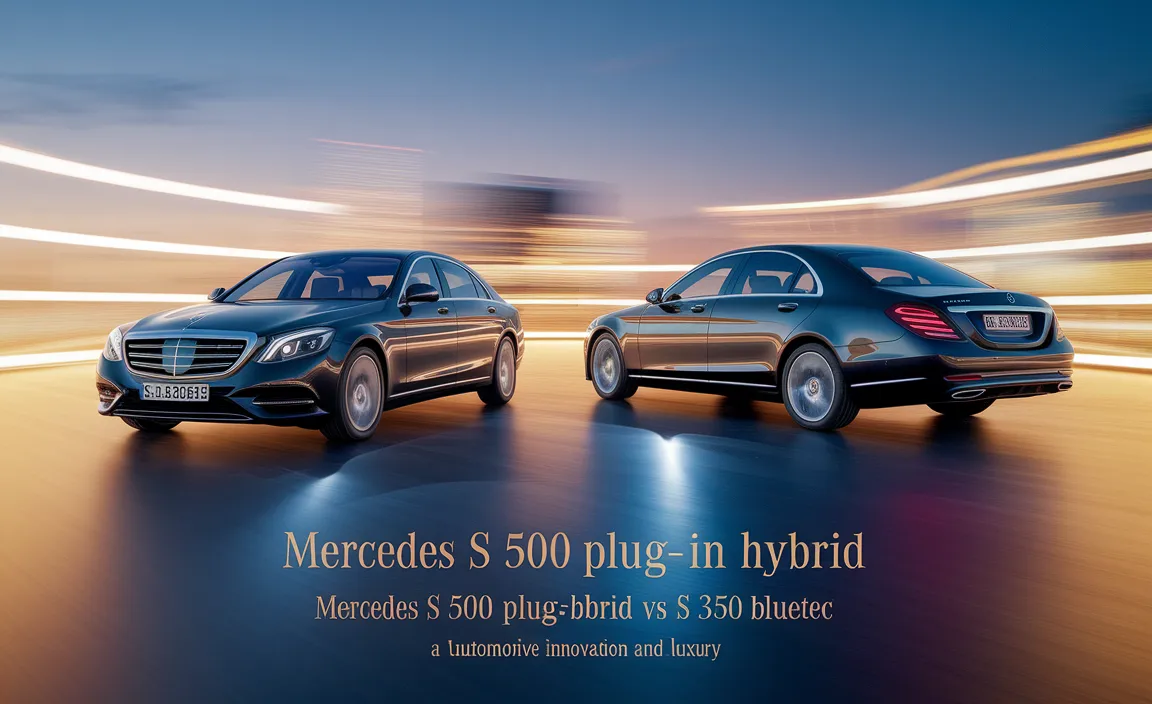
Mercedes S 500 Plug-In Hybrid: Smooth Power Delivery
The S 500 Plug-In Hybrid provides an exceptionally smooth and quiet driving experience, especially when operating in electric mode. The instant torque from the electric motor means acceleration feels immediate and effortless, whether you’re merging onto a highway or accelerating from a standstill. When the gasoline engine kicks in, it does so with remarkable subtlety, often unnoticed by the driver.
The combined power output from the engine and electric motor typically results in exhilarating acceleration. You get the best of both worlds: silent, zero-emission cruising for daily errands and potent, responsive performance for spirited driving. The battery placement also contributes to a lower center of gravity, potentially enhancing the car’s stability and handling. To keep your hybrid system in optimal condition, regular checks of the charging port and cable integrity are recommended. For detailed guidance, the U.S. Department of Energy’s fuel economy site provides official estimates and specifications for various plug-in hybrid models, allowing you to compare real-world efficiency.
Mercedes S 350 Bluetec: Torque and Long-Haul Stamina
The S 350 Bluetec is a masterclass in diesel engineering. Its engine delivers substantial torque from low RPMs, translating into strong pulling power and a feeling of effortless momentum. This is particularly noticeable when climbing hills or when carrying a full load of passengers and luggage.
While a diesel engine is inherently a bit more vocal than an electric motor or a refined gasoline engine, the S-Class chassis does an excellent job of insulating occupants from noise and vibration. The Bluetec technology also ensures that emissions, particularly NOx and particulate matter, are significantly reduced compared to older diesel engines, making it a cleaner diesel option. For maintaining the Bluetec system, ensuring the diesel particulate filter (DPF) is functioning correctly is key. Regular use on longer journeys can help keep the DPF from becoming clogged. Information from the DieselNet website offers in-depth technical details on emissions control technologies for diesel vehicles.
Fuel Economy and Running Costs
This is often where the biggest divergence occurs, and it’s crucial for determining the “proven choice” based on your usage patterns.
Mercedes S 500 Plug-In Hybrid: The Economist When Charged
When driven optimally, the S 500 Plug-In Hybrid can achieve impressively low running costs, particularly if most of your daily driving falls within its electric range. The cost of electricity to cover a certain distance is generally much lower than the cost of gasoline.
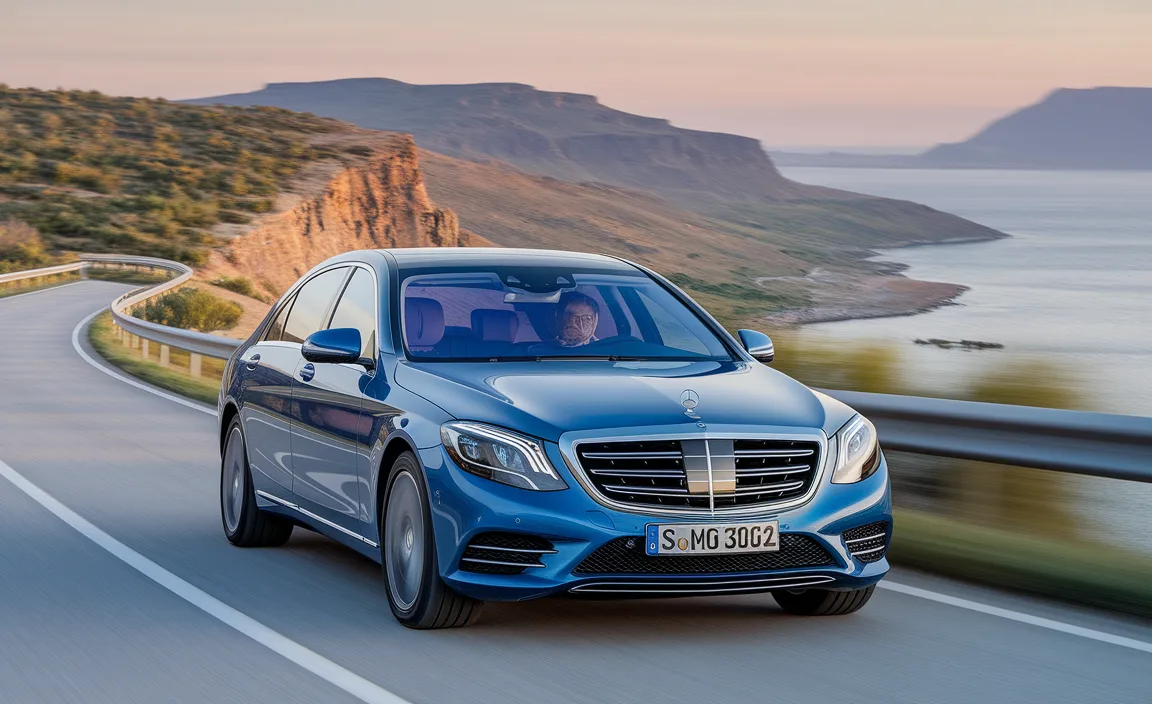
Benefits:
- Reduced Fuel Bills: Significant savings if you charge regularly and use electric power for daily commutes.
- Lower Emissions: Contributes to a smaller carbon footprint, especially in urban environments.
- Potential Incentives: In some regions, plug-in hybrids may qualify for tax credits or other government incentives.
Considerations:
- Charging Infrastructure: Requires access to a home or public charging station.
- Electricity Costs: Running costs can increase if electricity prices are very high or if you rarely charge.
- Battery Replacement: While designed for longevity, eventual battery replacement is a significant potential future cost.
Mercedes S 350 Bluetec: The Long-Distance Champion
The S 350 Bluetec excels in highway fuel economy. Diesel engines are inherently more efficient than gasoline engines for sustained cruising, and the S-Class chassis further refines this experience.
Benefits:
- Exceptional Highway Range: Can cover long distances on a single tank of fuel, minimizing refueling stops.
- Lower Fuel Cost per Mile (Historically): Diesel fuel has often been priced competitively, and the engine’s efficiency amplifies this.
- No Charging Needed: Convenience of refueling at any standard diesel pump.
Considerations:
- Diesel Emissions: While improved with Bluetec, diesel engines still produce NOx and particulate matter.
- Potential for Higher Maintenance: Some diesel-specific components, like the DPF and injection system, can be costly to repair.
- Fuel Availability: While generally widely available, diesel pumps might be less common than gasoline in some specific areas.
Technology and Features
Both models showcase Mercedes-Benz’s dedication to luxury and innovation, but the Plug-In Hybrid version often features the latest advancements.
Mercedes S 500 Plug-In Hybrid: Cutting-Edge Integration
The S 500 Plug-In Hybrid usually comes equipped with Mercedes-Benz’s most advanced infotainment, safety, and driver-assistance systems. The integration of hybrid technology means you’ll likely find dedicated menus and displays showing energy flow, charging status, and electric range.
Expect features such as:
- Advanced navigation systems that can suggest optimal routes based on battery charge.
- Driver-assistance packages with features like adaptive cruise control, lane-keeping assist, and autonomous emergency braking.
- Luxurious cabin appointments, premium sound systems, and sophisticated climate control.
The user interface for managing the hybrid functions needs to be intuitive, and Mercedes-Benz generally excels at this. You can typically set charging schedules, pre-condition the cabin using electric power, and monitor real-time energy consumption. For best practices in vehicle charging, the U.S. Department of Energy offers valuable insights into charging levels and their impact on battery health.
Mercedes S 350 Bluetec: Refined and Proven Technology
The S 350 Bluetec, particularly in later model years, also benefits from a wealth of advanced technology typical of the S-Class. It will feature a robust infotainment system, high-end audio, and a suite of safety and driver-assistance systems that were cutting-edge for their time.
Key features include:
- COMAND infotainment system with premium navigation.
- Driver assistance systems like DISTRONIC PLUS (adaptive cruise control), ACTIVE BODY CONTROL (ABC) suspension for a superior ride, and advanced parking assistance.
- Comfort-oriented features such as multi-contour seats with massage functions and ambient lighting.
While it may not have the specific hybrid-related displays, the S 350 Bluetec exudes a sense of proven reliability and sophisticated engineering that many owners still highly value. Keeping the Bluetec system optimized often involves ensuring the AdBlue (DEF) fluid is topped up if equipped with SCR for emissions control. Always use the correct fluid from a reputable source.
Maintenance and Reliability
When considering a “proven choice,” long-term reliability and maintenance costs are paramount.
Mercedes S 500 Plug-In Hybrid: New Tech, New Considerations
As with any vehicle incorporating advanced hybrid technology, the S 500 Plug-In Hybrid brings its own set of maintenance considerations. The electric powertrain adds complexity, with components like the high-voltage battery, electric motor, and power electronics requiring specialized knowledge and equipment for servicing.
Key Points:
- Battery Health: The high-voltage battery is designed to last many years but is a significant component that will eventually degrade. Its lifespan is influenced by charging habits and climate.
- Specialized Servicing: Routine maintenance should be carried out by technicians trained in high-voltage systems to ensure safety.
- Software Updates: Hybrid systems rely heavily on software; keeping the vehicle’s software up-to-date is crucial for optimal performance and reliability.
For those undertaking DIY checks, understanding basic safety protocols for hybrid vehicles is essential. Never attempt to service the high-voltage battery or related components without proper training. Basic checks might include monitoring charging cable condition (visual inspection for damage) and ensuring charging ports are free of debris.
Mercedes S 350 Bluetec: Robust Diesel Engineering
The S 350 Bluetec, built on a more traditional powertrain architecture, is often perceived as more straightforward to maintain, especially for mechanics familiar with diesel engines. The robust nature of the diesel engine contributes to its reputation for longevity.
Key Points:
- Diesel-Specific Maintenance: Requires regular oil changes with appropriate diesel-grade oil, fuel filter replacement, and checks on the emissions control system (e.g., DPF, SCR).
- AdBlue/DEF: If equipped with selective catalytic reduction (SCR), regular replenishment of AdBlue (Diesel Exhaust Fluid) is necessary.
- Proven Durability: The underlying diesel engine technology has a long track record of reliability when properly maintained.
For DIY enthusiasts, oil and filter changes are generally accessible. However, diagnosing and repairing issues related to the diesel injection system or emissions controls would typically require specialized diagnostic tools and expertise. Always adhere to Mercedes-Benz’s recommended service intervals to prolong the life of the Bluetec system. Ensuring you use high-quality fuel and AdBlue can also prevent costly repairs down the line; companies like American Petroleum Institute (API) provide guidance on fuel quality and its impact on vehicle performance.
Which is Your Proven Choice?
The “proven choice” between the Mercedes S 500 Plug-In Hybrid and the S 350 Bluetec ultimately hinges on your individual driving habits, priorities, and long-term outlook.
Choose the S 500 Plug-In Hybrid if:
- You prioritize environmental impact and futuristic technology.
- Your daily driving primarily consists of shorter trips within the electric range.
- You have easy access to reliable charging at home or work.
- You want to minimize your fuel expenditure for daily use.
- You anticipate potential future shifts towards electric mobility and want to be ahead of the curve.
Choose the S 350 Bluetec if:
- You frequently undertake long-distance journeys.
- You value exceptional, consistent highway fuel economy without the need for charging.
- Your driving environment might not always offer convenient charging options.
- You appreciate the strong, classic torque delivery of a diesel engine.
- You prefer a more established, albeit still sophisticated, powertrain technology.
The term “proven choice” can be interpreted in different ways. The S 350 Bluetec represents a proven path in efficient, long-distance luxury motoring that has stood the test of time. However, the S 500 Plug-In Hybrid is rapidly becoming the new proven choice for modern luxury, sustainability, and cost-effective daily driving, especially as charging infrastructure and battery technology continue to advance.
Frequently Asked Questions (FAQs)
Q1: Can I charge the S 500 Plug-In Hybrid at home?
Yes, absolutely! The S 500 Plug-In Hybrid is designed to be charged at home using a standard outlet or, for faster charging, a dedicated wall charger (Level 2 charger). This is the most convenient way to ensure you have electric range for your daily trips.
Q2: How far can the S 350 Bluetec go on a single tank of diesel?
The S 350 Bluetec is renowned for its excellent range. Depending on driving conditions and the specific model year, it could typically achieve well over 500 miles on a full tank, making it ideal for long road trips.
Q3: Does the Plug-In Hybrid S 500 still use gasoline?
Yes, it uses both gasoline and electricity. You can drive on electric power alone for a certain range, switch to gasoline, or use both simultaneously for maximum power. When the electric range is depleted, the gasoline engine takes over, and the battery can be recharged via plugging in or through regenerative braking.</